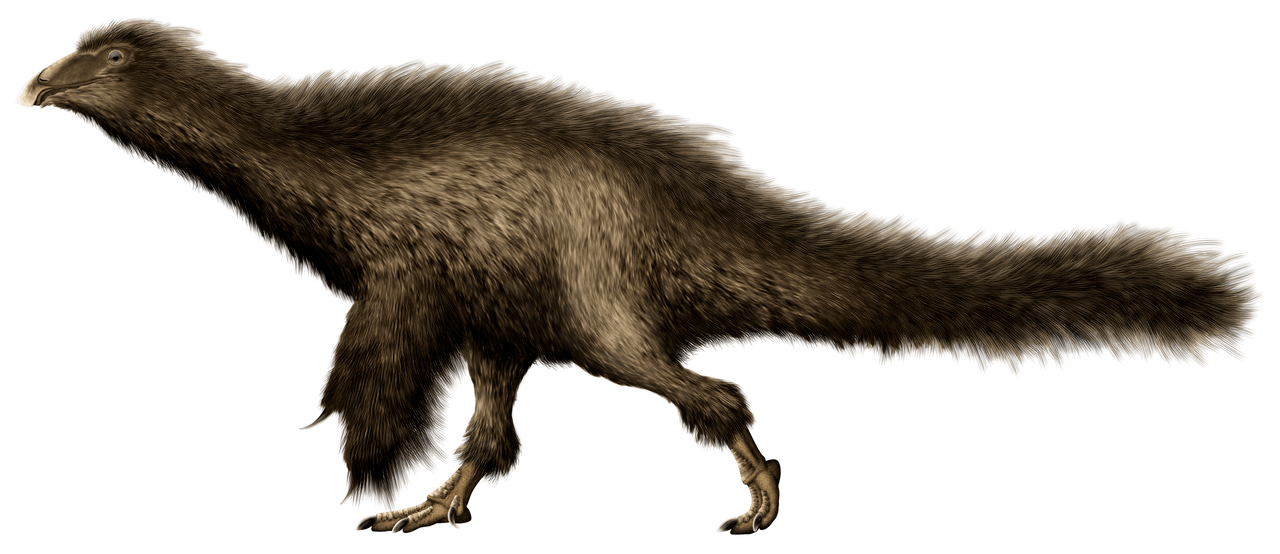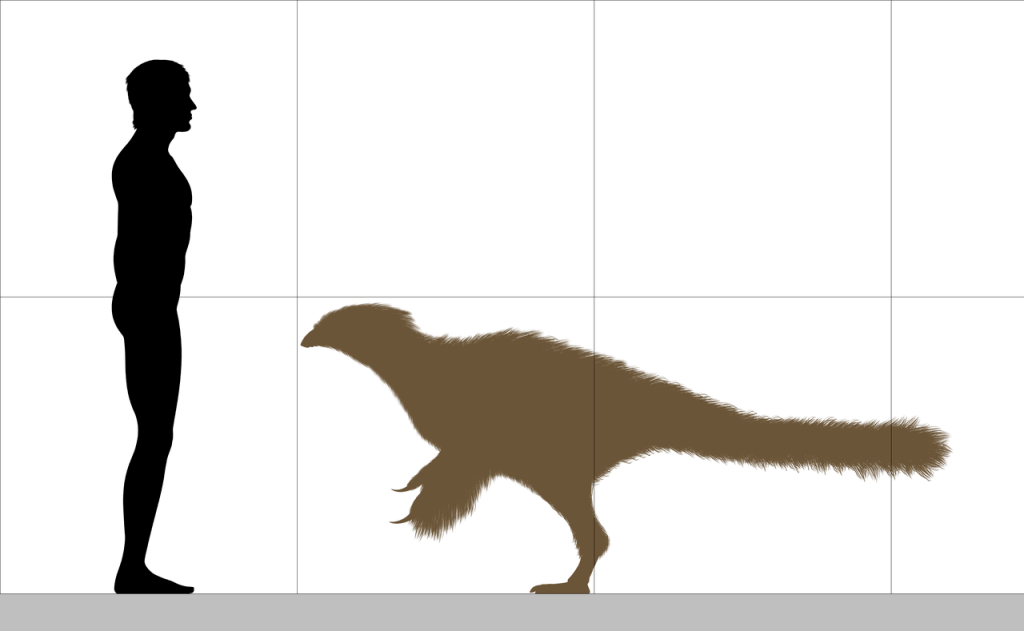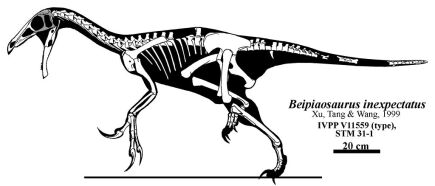
Beipiaosaurus received its species name inexpectus because it had some surprising features.
While late therizinosaurs had all four toes well developed and thus in contact with the ground, Beipiaosaurus had the inner toes underdeveloped.
The most outstanding feature, however, was the presence of two different types of feathers. First, it possessed a dense layer of down that probably covered the entire body and probably served as thermal insulation.
A second type of feathers, larger and longer, protruded upward through this down layer. These feathers were between 10 and 15 cm long and were not suitable for flying. Their quills resembled those of a porcupine.
| Profile | Beipiaosaurus |
|---|---|
| Prehistoric Era | Lower Cretaceous 125 million years ago |
| Order | Saurischia |
| Suborder | Theropoda |
| Family | Coelurosauria |
| Tribe | Therizinosauria |
| Genus | Beipiaosaurus |
| Species | Beipiaosaurus inexpectus |
| Height | 0.9 meter |
| Length | 2.2 meter |
| Weight | 45 to 90 kg |
| Territory | Yixian Formation , Liaoning Provinz, China |
These feathers are known as EBFF in professional circles.
These long feathers probably did not have a practical purpose. They served more for display purposes, such as courtship. Much like peacocks today.
EBFFs are concentrated on the head, neck, and tail of Beipiaosaurus.
Areas where modern birds are more likely to show flight feathers.

Beipiaosaurus held the title of the largest known dinosaur with feathers for many years. It had a length of 2.2 m. However, he lost this title when Yutyrannus was excavated and described in 2012.

In 1996 the first remains of Beipiaosaurus were found and formally described in 1999. From these three specimens it is known that numerous impressions of feather structures are present. From these impressions, scientists are even able to determine the colors of the feathers. This turned out to be brownish.
Image Source: PaleoNeolitic, CC BY 4.0 https://creativecommons.org/licenses/by/4.0, via Wikimedia Commons
Jaime A. Headden (User:Qilong), CC BY 3.0 https://creativecommons.org/licenses/by/3.0, via Wikimedia Commons
PaleoNeolitic, CC0, via Wikimedia Commons